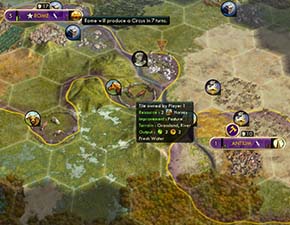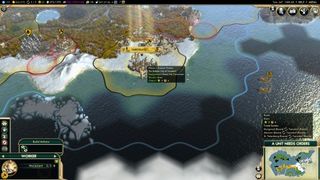

Whether or not you complete them the presence of quests in Beyond Earth does a lot to build a narrative for a player to follow while helping to prioritize the exploration of important gameplay features like the CIA-style spying system and the exploration of map. I would characterize the quest system as being most similar to Minecraft’s implementation due to its unobtrusive nature and the player’s ability to complete quests incidentally as they try to achieve victory. Things are no different in Beyond Earth, but Firaxis has seen fit to incentivize players to meet certain goals by assigning them quests. In prior Civ games players have been allowed to do pretty much whatever they wanted within the bounds of the game. Perhaps the biggest and most meaningful change in Beyond Earth is the new quests system.

This is an interesting wrinkle to the old settle-new-cities formula but I’d argue that it doesn’t actually change the mechanics of expanding your civilization rather it just adds a sense of realism that was missing before and limits the viability of using cities as an instant fortress. The outpost is uncontrollable and cannot defend itself until it completes its gestation and becomes a city. Thus in most ways the basic units and city building mechanics in Beyond Earth should be familiar to Civ V players.īut some things have changed for example now when you construct a new city you have to wait a few turns while the outpost that your settlers built matures into a real city based on the worthiness of its location and how many trade convoys you’re sending its way. The same is true of ranches where in Civ V they were wood fenced hexes and in Beyond Earth they’ve replaced the wood with lasers, oh joy. No longer do you send out a band of cave men with pick axes and shovels to establish a new mine or farm, rather futuristic bulldozers take their place. All of the unit models and many of the unit names have been changed in Beyond Earth.

The visual styling is much the same with a simple hex based map and a loosely realistic depiction of far future farms, mines, cities, and geographical features.

The game play formula is much the same as it was in Civ V but key elements like the tech tree, city building, diplomacy, city states, and victory conditions have seen major makeovers.īeyond Earth is a refined and worthy sequel to Civ V. That said it’s clear that the developers at Firaxis Games looked at Beyond Earth as an evolutionary sequel rather than a revolutionary redesign of the franchise. But Beyond Earth is a sequel that diverges farther from its predecessor the longer you play it. Civilization: Beyond Earth shares a lot with its predecessor Civilization V and you’d be forgiven if you confused the two at first glance.


 0 kommentar(er)
0 kommentar(er)
